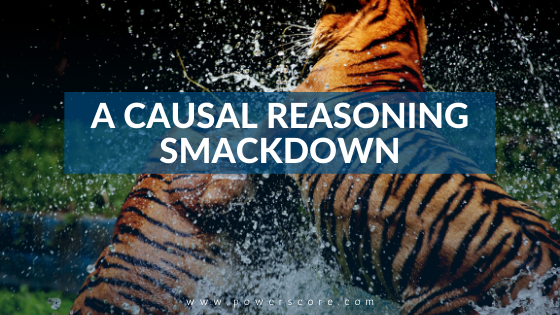I recently had the great pleasure of teaching our free Causal Reasoning Secrets seminar, which is always a lot of fun. Getting into the spirit of things, I searched federal case law for opinions focusing on causal reasoning and found a doozy in Claar v. Burlington Northern R. Co., 29 F.3d 499 (C.A.9 (Mont.), 1994).
Claar v. Burlington Northern R. Co.
Twenty-seven employees brought a suit against the Burlington Northern Railroad Company. They were claiming that their exposure to chemicals in the workplace caused them to suffer various injuries. The federal trial court, however, had concerns about the workers’ ability to prove a causal link existed between their work environment and their ailments. Based on that concern, the court consolidated the cases for pretrial purposes and selected six of the plaintiffs as test cases. For those cases, the court issued an order requiring:
The plaintiffs must submit affidavits describing their exposure to the chemicals they claim harmed them, and affidavits from physicians listing each plaintiff’s specific injuries, the particular chemical(s) that in the physician’s opinion caused each injury, and the scientific basis for the physician’s conclusions.
What the Experts Said
The plaintiffs’ two expert witnesses, both physicians, submitted affidavits in line with the court’s order, but the court wasn’t satisfied. It ruled that the experts hadn’t explained which chemicals caused which injuries. Also, the court pointed out that the experts hadn’t explained the scientific basis for their conclusions.
The experts tried again but still fell short, according to the court. The railroad asked the court to grant it summary judgment. They argued that the experts’ affidavits were inadmissible because they still didn’t explain the experts’ reasoning and methods. The court agreed and dismissed the case. The employees appealed the trial court’s decision to grant summary judgment for the railroad and voila! We get our very interesting federal court causal reasoning smackdown.
To save you the suspense, let’s just say it didn’t go well for the plaintiff employees. The court started by requiring the trial court to ensure that experts reached their conclusions using scientific methods and procedures. Those conclusions could also be not mere subjective beliefs or unsupported speculation. This level of scrutiny is very important. Why? Bbecause courts and juries tend to give the testimony of expert witnesses a great deal of weight. Having the trial court play gate-keeper before the expert’s opinion comes into evidence is an important safeguard against quacks running amuck in our courts any more than they already do.
Dyscalculia
In this case, the appellate court pointed out that neither of the experts “made any effort to rule out other possible causes for the injuries plaintiffs complain of, even though they admitted that this step would be standard procedure before arriving at a diagnosis.” As an example, the court called out one of the experts for diagnosing one of the plaintiffs with:
“dyscalculia” (poor arithmetic ability) and “spelling dispraxia” (poor spelling ability), without first reviewing [the plaintiff’s] school records, which indicate[d] that he suffered from these “conditions” since childhood. Because he failed to review these records, [the expert] could testify reliably only that [the plaintiff’s] spelling and arithmetic abilities are below average. He offered no scientific basis for concluding that chemical exposure played any part at all in [the plaintiff’s] condition.
Even worse for the plaintiffs, the appellate court agreed with the trial court that it seemed like the experts had their minds made up before digging into the research. Clearly unhappy with the experts, the appellate court said that “scientists whose conviction about the ultimate conclusion of their research is so firm that they are willing to aver under oath that it is correct prior to performing the necessary validating tests could properly be viewed by the [trial] court as lacking the objectivity that is the hallmark of the scientific method.” Ouch.
Always Consider Alternate Causes
So, let’s sum all of this up. Essentially, the appellate said that experts were set on reaching a predetermined causal conclusion. They failed to consider alternate causes. Does that sound familiar? That would be a great description of what happens time and again in the logical reasoning section of the LSAT. The stimulus author takes scant evidence and jumps to a causal conclusion. They ignore other possibilities and creating causal relationships out of thin air. This habit of stimulus authors acting as if there’s just one cause for every effect, and that they have enough information to identify it, gives knowledgeable test takers the upper hand on the LSAT.


Leave a Reply